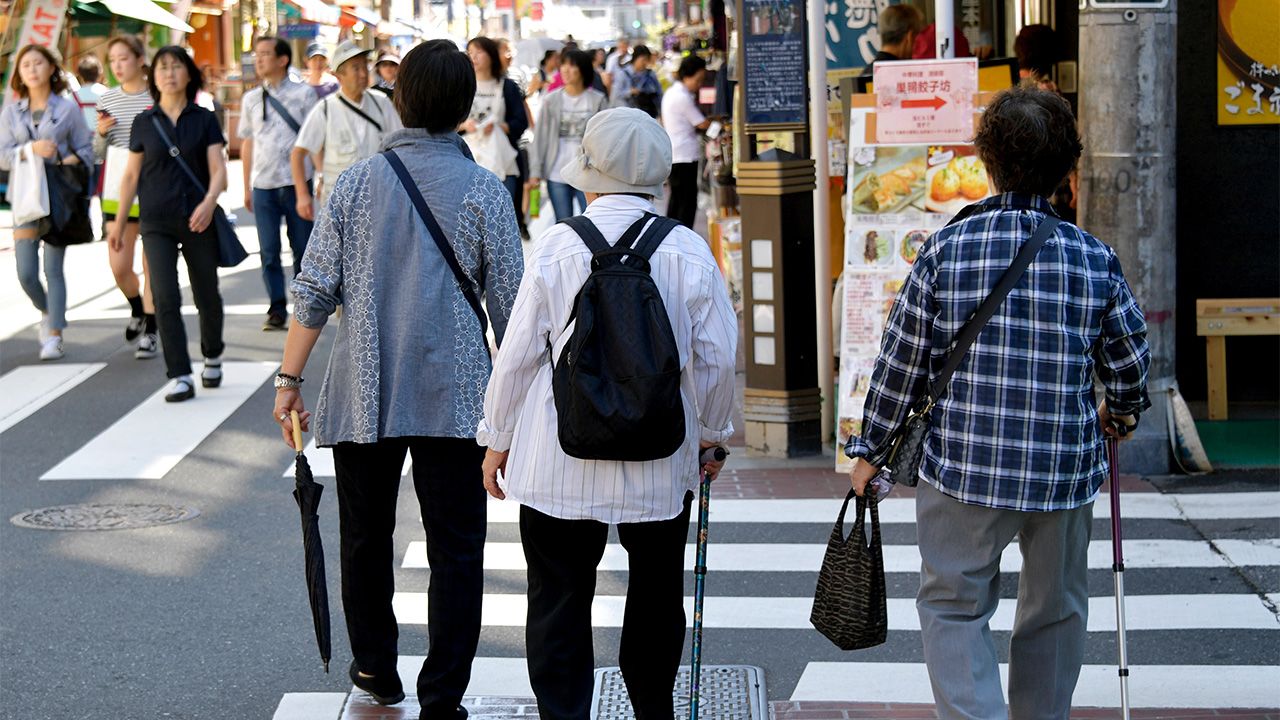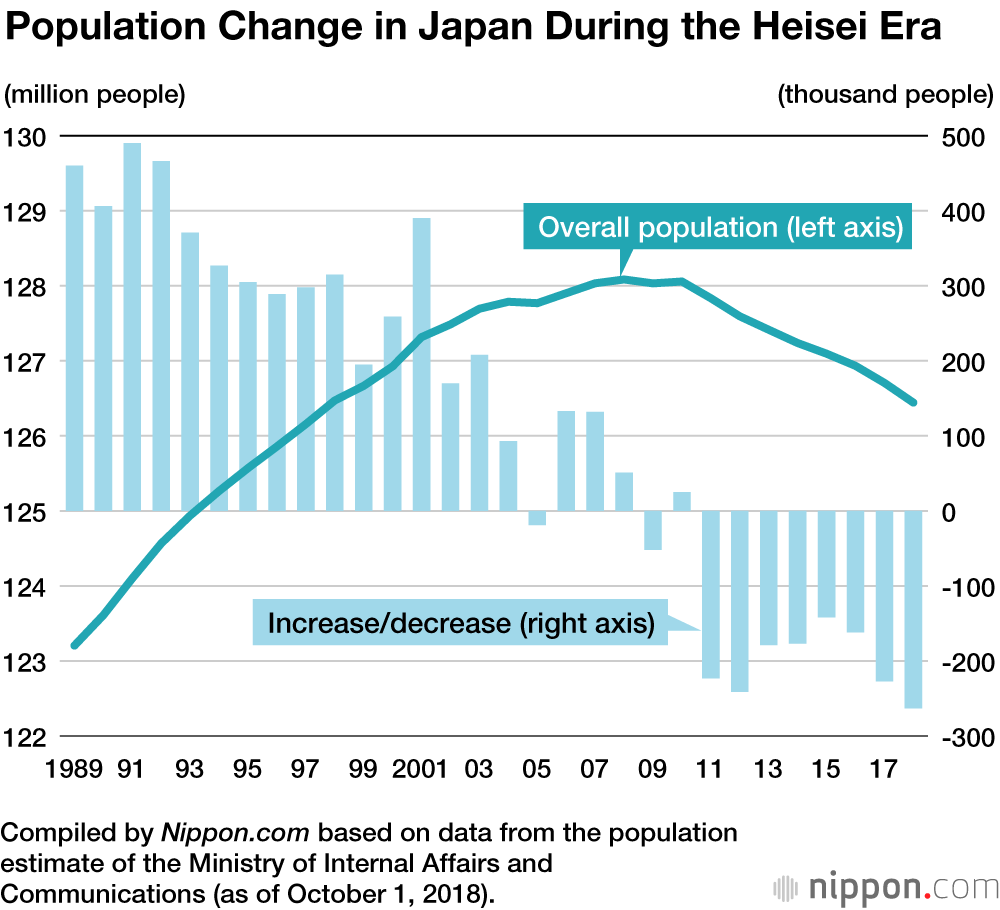
Japan’s Population Hit Downward Trend in Heisei
Society- English
- 日本語
- 简体字
- 繁體字
- Français
- Español
- العربية
- Русский
Japan’s population as of October 1, 2018, was 126,443,000 according to an estimate by the Ministry of Internal Affairs and Communications. This is a decrease of 263,000, or 0.21%, compared to the previous year. The steady decline in Japan’s population has become clear over the past decade, and this is the eighth consecutive year for the population to fall.
Among those living in Japan, 124,218,000 are Japanese citizens, a year-on-year decrease of 430,000 or 0.35%. Meanwhile, the number of foreigners residing in Japan rose by 167,000 to a total of 2,225,000, accounting for 1.76% of the overall population.
In 2018, there were 75.5 million people between the ages of 15 and 64 in what is defined as the working-age population; a year-on-year decrease of 512,000 people. Its 59.7% share of the total population in 2018 is roughly tied for the lowest percentage on record with 1950, when statistics were first kept. The number of those 65 and older rose year on year by 426,000, for a total of 35.6 million, accounting for a record high 28.1% of the total population. The number of those 70 or older also exceeded 20% for the first time, rising year-on-year by 979,000, for a total of 26.2 million.
The statistics reveal a social structure in Japan that is becoming increasingly reliant on foreign workers as its own workforce contracts due to the aging of the population.
(Translated from Japanese. Banner photo © Jiji.)

